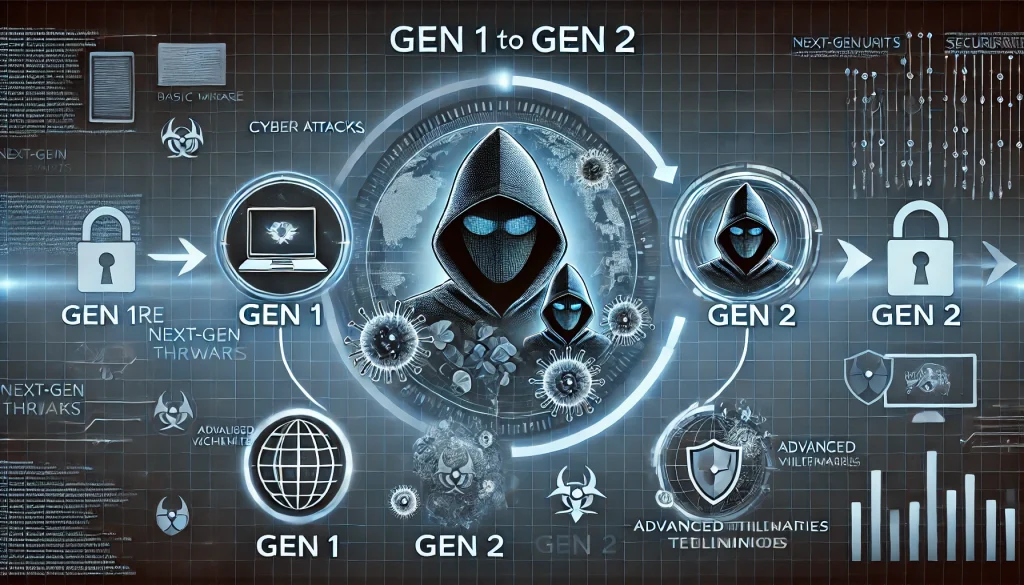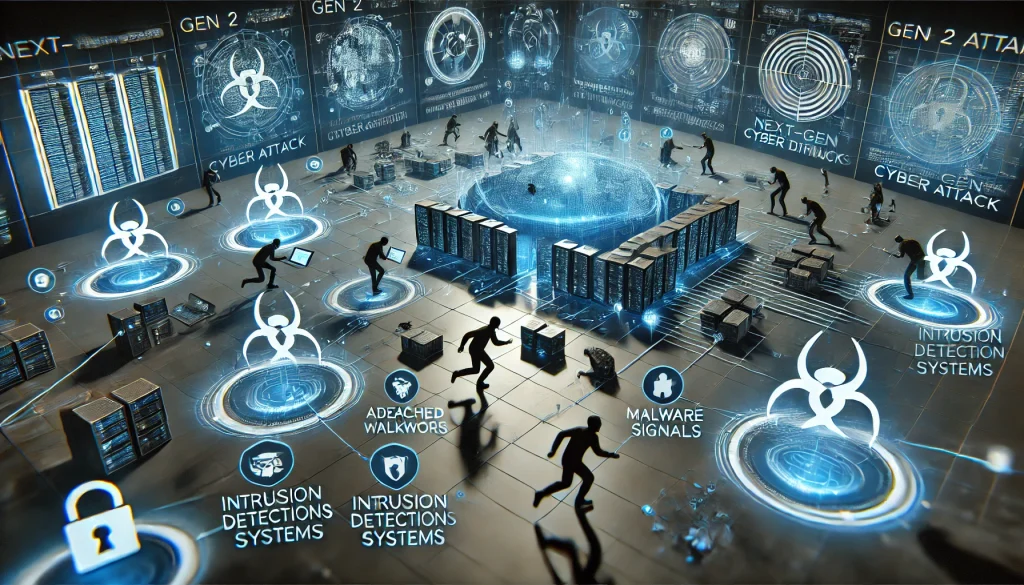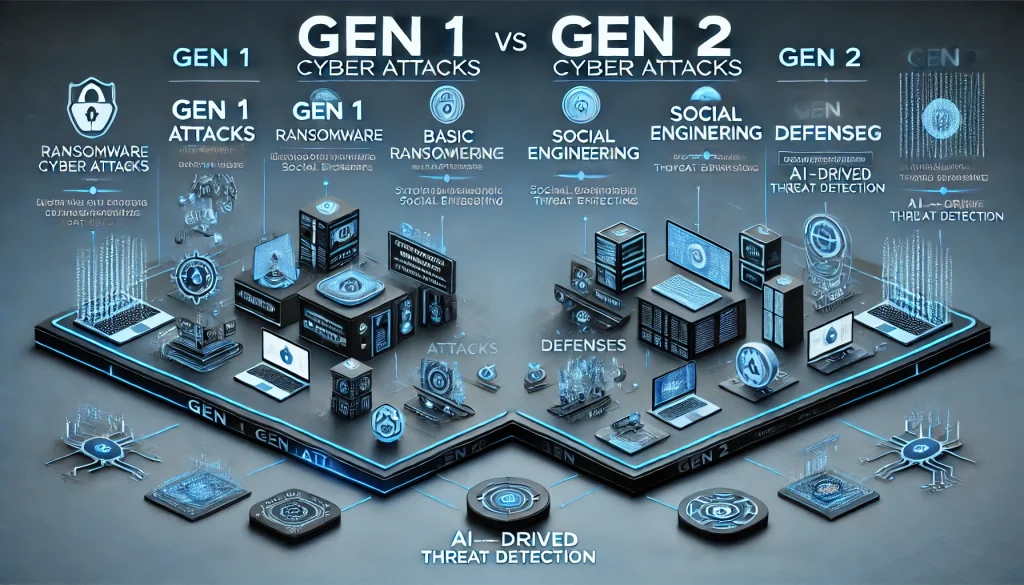
Overview
Cybersecurity is a dynamic field that continually evolves to address emerging threats. One of the most concerning types of cyber attacks today is the Gen 2 cyber attack. Gen 2 refers to a generation of attacks where the primary focus is on viruses and worms—self-replicating malicious software designed to infiltrate systems, damage data, and spread across networks. These attacks are part of the second wave of cyber threats, following initial, less sophisticated forms.
As of October 2024, businesses face heightened risks from such attacks due to the rapid digital transformation and increased connectivity of devices. Companies of all sizes must remain alert to this growing threat. The relevance of understanding Gen 2 cyber attacks cannot be overstated, especially for those involved in industries handling large amounts of sensitive data. By learning more about these attacks and prevention methods, businesses can take proactive measures to mitigate potential damages.
How Gen 2 Cyber Attacks Work

At the core of Gen 2 cyber attacks are viruses and worms. These attacks primarily exploit software vulnerabilities, allowing attackers to infiltrate systems, steal data, and cause extensive disruptions. While viruses need a host file or program to execute and spread, worms operate independently, moving from one system to another across networks without user intervention. One notorious example is the Netsky worm, which caused widespread damage by spreading through email attachments, overwhelming systems, and crippling networks.
Once inside a system, viruses and worms can cause extensive damage, such as corrupting files, stealing sensitive information, or even granting attackers remote control over a system. The primary distinction between these two is their method of propagation: viruses require some form of user action, while worms self-replicate and spread autonomously.
As businesses become more reliant on digital infrastructures, the attack surfaces for these malicious programs have widened. From network endpoints to personal devices, vulnerabilities in outdated software or inadequate security protocols are easily exploited by attackers using these Gen 2 methods.
Impact on Businesses
The impact of Gen 2 cyber attacks on businesses can be devastating, both financially and operationally. A successful attack can lead to:
- Loss of Data: Critical business and customer data can be stolen, corrupted, or held hostage for ransom.
- Disruption of Operations: Network outages caused by worms or viruses can bring entire operations to a standstill, costing businesses both time and money.
- Reputation Damage: Customers lose trust in businesses that fail to protect their sensitive information, which can lead to long-term brand damage.
- Financial Losses: The costs associated with recovering from an attack, including data recovery, legal fees, and potential fines for data breaches, can be astronomical.
For example, Netsky caused billions in damages globally, as businesses scrambled to contain its spread and restore operations. Companies affected by Gen 2 attacks often suffer months or even years of recovery time, as they deal with lingering issues, such as data loss and customer distrust.
Prevention Strategies

Fortunately, there are several strategies that businesses can implement to protect themselves from Gen 2 cyber attacks. Here are some key approaches:
- Up-to-date Software and Patching: Many viruses and worms exploit known vulnerabilities in software systems. Keeping all software up to date and applying patches regularly can prevent attackers from using these vulnerabilities to their advantage.
- Advanced Firewalls and Intrusion Detection Systems: Firewalls are the first line of defense, helping to filter out malicious traffic. Intrusion detection systems (IDS) monitor network activity and alert administrators to suspicious behavior.
- Email Filtering and Anti-virus Software: Many Gen 2 attacks, especially worms, spread through email attachments. Implementing advanced email filtering systems and ensuring that robust antivirus software is in place can drastically reduce the risk of infection.
- Employee Training: Human error is often a weak point in security. Businesses must invest in training employees to recognize phishing attempts and suspicious email attachments, thereby reducing the chances of viruses and worms spreading.
Future of Gen 2 Cyber Attacks
As technology continues to evolve, so too will Gen 2 cyber attacks. Cybercriminals are becoming more adept at bypassing traditional security measures and leveraging newer methods of infiltration. For example, attacks are now incorporating artificial intelligence (AI) to make their viruses more adaptable and harder to detect. Additionally, with the rise of the Internet of Things (IoT) and cloud computing, the attack surfaces for Gen 2 threats have expanded.
In the future, we can expect to see more sophisticated versions of viruses and worms that exploit newer technologies. It’s essential that businesses and cybersecurity professionals stay ahead of these trends by continuously updating their knowledge and tools. Investing in cutting-edge cybersecurity technologies, such as AI-driven threat detection systems and blockchain-based security protocols, can provide more robust defenses against the ever-evolving Gen 2 threats.
Conclusion
The risks associated with Gen 2 cyber attacks are real and growing, especially as businesses continue to digitize their operations. October 2024 serves as a critical time to reflect on the state of cybersecurity, recognizing the need for heightened awareness and stronger defense mechanisms. These attacks are not only costly but also disruptive to business continuity.
Prevention strategies such as regular software updates, advanced firewalls, and employee training are essential for mitigating the risks posed by Gen 2 attacks. As cybercriminals continue to innovate, businesses must prioritize security, invest in cutting-edge defenses, and foster a culture of cybersecurity awareness.
Key Takeaways
- Viruses and Worms: Gen 2 cyber attacks mainly involve viruses and worms, which exploit vulnerabilities in software and networks.
- Business Impact: These attacks can result in significant financial losses, operational disruptions, and damage to a company’s reputation.
- Prevention: Regular updates, robust firewalls, email filtering, and employee training are key to preventing these attacks.
Resources
- Cybersecurity Magazine History of Cybersecurity.
- Yu.edu Blog. The Evolution of Cyber Threats.
- RoboticsBiz. Five Generations of Cyber Attacks in History.
- KnowBe4. Five Generations of Cybercrime.
- Check Firewalls. Preventing the Next Mega Cyber Attack.
